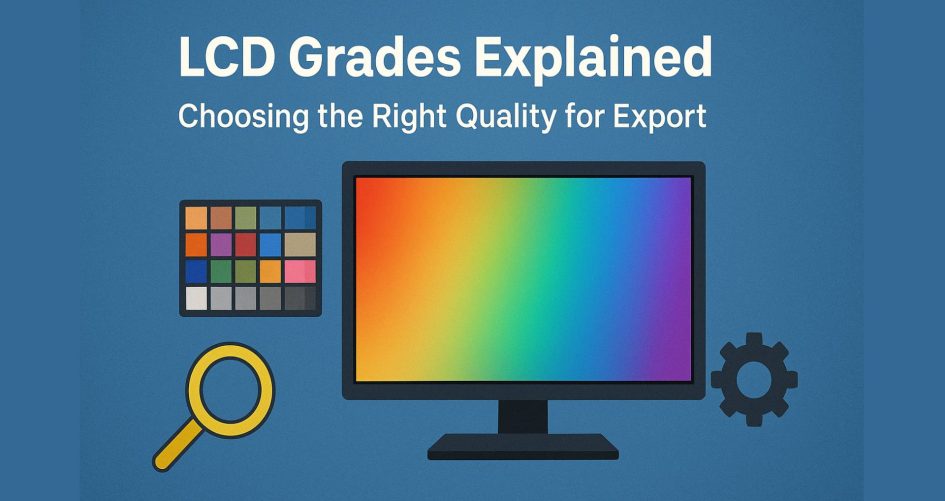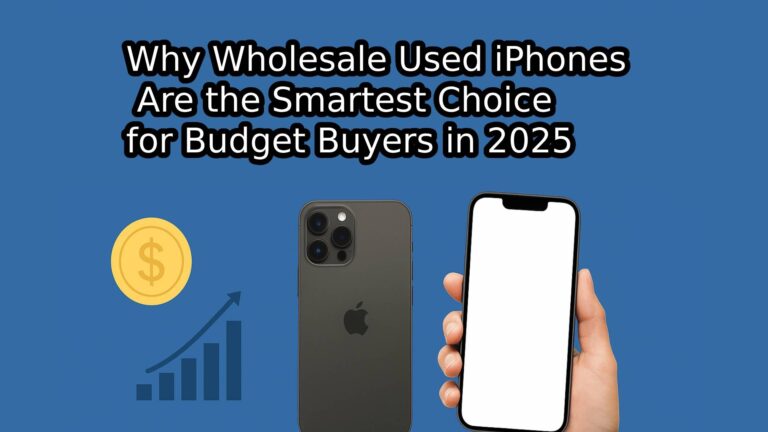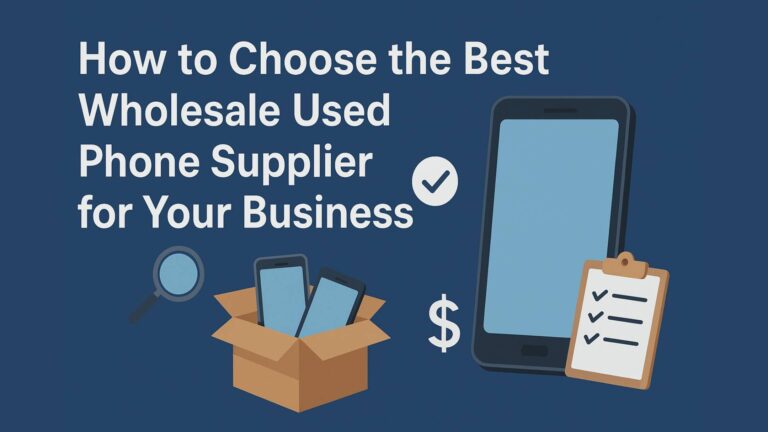In the fast-growing refurbished mobile market, understanding LCD screen grades, maintaining mobile screen quality, and choosing the best wholesale LCD options are critical for exporters who want to stay competitive. Whether you’re supplying bulk screens to repair shops or exporting refurbished devices overseas, knowing the difference between LCD grades can make or break your business. Know more.
Introduction to LCD Grades in the Wholesale Market
The refurbished smartphone industry depends heavily on screen replacements, and LCD screen grades serve as the benchmark for quality. Exporters who fail to understand these grades risk overpaying for low-quality screens or missing opportunities to maximize profits. In wholesale trade, grading isn’t just about aesthetics—it directly impacts the resale value, warranty claims, and customer satisfaction rates.
Why Exporters Need to Understand LCD Screen Grades
When selling in large quantities, even a small difference in mobile screen quality can significantly affect customer satisfaction and return rates. Exporters must choose grades based on target market needs. For example, premium markets often require Grade A+ wholesale LCD screens, while budget markets can accept Grade B or C.
Understanding LCD Screen Grades
Grade A+ – Premium Quality
- Definition: Brand-new or like-new condition, no visible scratches, dead pixels, or discoloration.
- Best For: High-end resale markets, flagship repairs, premium refurbished devices.
- Advantages: Highest customer satisfaction, minimal returns, highest resale value.
Grade A – High Quality with Minor Imperfections
- Definition: Fully functional screens with very minor cosmetic imperfections not visible during normal use.
- Best For: Mid-range export markets where customers value both quality and affordability.
- Advantages: Lower cost than A+, but still high in mobile screen quality.
Grade B – Functional but with Noticeable Wear
- Definition: May have visible scratches, minor discoloration, or slightly reduced brightness. Fully functional.
- Best For: Budget markets or customers willing to accept cosmetic flaws for a lower price.
- Advantages: Ideal for affordable wholesale LCD bulk orders.
Grade C – Budget-Friendly but Lower Quality
- Definition: Noticeable cosmetic wear, possible screen burn-in, weaker touch response.
- Best For: Extremely price-sensitive markets or markets with demand for parts rather than full repairs.
- Advantages: Lowest price point, but reduced mobile screen quality.
Factors That Influence Mobile Screen Quality
Pixel Density and Color Accuracy
Higher pixel density results in sharper images, while accurate color reproduction ensures that images and videos appear vibrant.
Brightness and Backlight Consistency
Inconsistent backlighting can reduce the perceived quality of a screen, especially in outdoor viewing.
Touch Sensitivity and Responsiveness
The touch layer must respond instantly for smooth user interaction.
Durability and Frame Integrity
A strong LCD frame prevents bending or cracking during installation or shipping.
Wholesale LCD Purchasing Tips for Export Businesses
Matching LCD Grades with Market Demand
Analyze your target market’s price sensitivity and product expectations before bulk buying. For premium markets, stick to Grade A or A+.
Balancing Price and Quality in Bulk Orders
While lower grades may seem cost-effective, high return rates can erase profits. Aim for the best mobile screen quality your budget allows.
Working with Trusted Wholesale LCD Suppliers
Vet suppliers through reviews, sample testing, and quality certifications before committing to large orders.
Quality Testing and Verification Before Export
Functional Testing Procedures
Check touch response, brightness, and color accuracy before packing.
Visual Inspection Standards
Ensure there are no dead pixels, discoloration, or deep scratches.
Common Mistakes Exporters Make
- Relying solely on supplier claims without testing.
- Mixing grades without informing buyers.
- Ignoring packaging safety for fragile screens.
Packaging and Shipping Considerations for LCD Exports
Safe Packaging Techniques
Use anti-static bags, foam inserts, and rigid boxes to prevent damage.
Avoiding Damage During International Shipping
Select reliable couriers, use shock-proof packaging, and label shipments as “Fragile” and “Handle with Care.”
Latest Trends in Mobile Screen Quality for 2025
Demand for High-Resolution Displays
As 5G and high-quality streaming grow, markets are demanding screens with better resolution and color accuracy.
Eco-Friendly Refurbished LCDs
Sustainability trends are pushing suppliers toward recycled and environmentally friendly manufacturing.
Increased Demand in Emerging Markets
Growing smartphone adoption in Africa, South America, and Southeast Asia is creating new export opportunities.
FAQs – LCD Screen Grades for Export
Q1: What is the difference between Grade A and Grade B LCD screens?
A: Grade A has minimal cosmetic flaws, while Grade B may show visible wear but still functions properly.
Q2: Can Grade C LCD screens be used for repairs?
A: Yes, but they’re better suited for low-budget markets or devices where appearance isn’t a priority.
Q3: How can I verify LCD screen grades from a supplier?
A: Request sample units, test for brightness, touch response, and check for cosmetic damage.
Q4: Are higher grades always better for export?
A: Not necessarily—it depends on your target market’s needs and price sensitivity.
Q5: What’s the best way to ship wholesale LCD screens internationally?
A: Use secure, shock-proof packaging and choose a courier experienced with fragile electronics.
Q6: Why is mobile screen quality so important for exports?
A: Higher quality reduces returns, boosts brand trust, and increases resale value.
Conclusion – Making the Right Choice for Your Export Business
Choosing the right LCD screen grades is more than a purchasing decision—it’s a strategic move that affects customer satisfaction, return rates, and profitability. By understanding mobile screen quality and partnering with reputable wholesale LCD suppliers, exporters can secure a strong foothold in competitive global markets. Know more.





